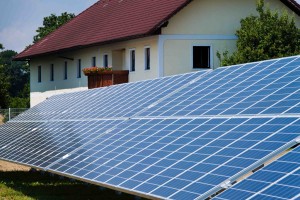Technical Contacts:
Ryan Wiser (510) 486-5474, [email protected]
or Galen Barbose (510) 495-2593, [email protected]
Researchers at the U.S. Department of Energy’s Lawrence Berkeley National Laboratory (Berkeley Lab) released a new study Thursday documenting the design of and early experience with state-level renewables portfolio standard (RPS) programs in the United States that have been specifically designed to encourage solar energy.
The study finds that these state-level RPS programs have already proven to be an important driver for solar energy deployment in the U.S., resulting in more than 250 megawatts (MW) of new solar capacity through the end of 2009.“These impacts are expected to grow considerably in coming years; however, states and utilities are likely to face a number of challenges in meeting aggressive solar energy targets,” says report co-author Ryan Wiser with Berkeley Lab’s Environmental Energy Technologies Division.
 Currently, 29 states and the District of Columbia have enacted mandatory RPS policies that require retail electricity sellers to supply a minimum percentage or amount of their retail load with eligible forms of renewable energy. Of these 30 jurisdictions, 20 have created RPS policies that provide differentially greater support to solar energy—the most common approach being a “set-aside” requiring a specific percentage of the RPS requirements to be met with solar energy or distributed generation (DG).
Currently, 29 states and the District of Columbia have enacted mandatory RPS policies that require retail electricity sellers to supply a minimum percentage or amount of their retail load with eligible forms of renewable energy. Of these 30 jurisdictions, 20 have created RPS policies that provide differentially greater support to solar energy—the most common approach being a “set-aside” requiring a specific percentage of the RPS requirements to be met with solar energy or distributed generation (DG).
These policy designs are being driven partly by the recognition that RPS policies have thus far not yielded significant renewable resource diversity, with wind energy being the dominant form of renewable energy installed to date. That latter trend is partly a reflection of the fact that wind energy has historically been one of the most economically attractive renewable resources, though the economics of large solar energy projects relative to wind have improved significantly in recent years.
The study estimates that, by 2025, the solar and DG set-asides already established under existing state RPS policies will require the equivalent of 9,400 MW of solar capacity, representing roughly a six-fold increase over the amount installed at the end of 2009. New Jersey, Illinois, Arizona and Maryland represent more than two-thirds of that total. California, by far the largest solar market in the U.S. today, does not have a solar set-aside within its RPS and is therefore not included in this tally, though it will continue to be a major driver for solar additions over the coming years as well.
Experiences thus far in meeting RPS set-aside targets have been somewhat mixed. Of the nine states that had active solar or DG set-aside obligations in 2008, only three fully met their targets through the purchase of qualifying renewable energy or renewable energy certificates. As Wiser explains, “The difficulties that some states have already faced in meeting solar targets demonstrate the importance of policy design details to ensuring that program goals are achieved.”
One issue highlighted in the report is that many states have established caps on the costs that utilities may bear in meeting RPS targets. This issue has already surfaced in several states, where the amount of funding allocated to procuring solar resources has been below the level necessary to meet the existing targets. Wiser adds: “As solar targets in many states rise over time, current cost caps may increasingly become binding, thereby limiting future solar capacity additions at levels below what was originally envisioned. States may be able to mitigate this potential issue by developing cost caps that are appropriately matched to their solar targets.
A second key challenge is to encourage long-term contracting for solar energy resources, as renewable project developers often require such contracts in order to secure financing. As Galen Barbose, co-author of the report and also with Berkeley Lab explains: “This is a major issue in restructured electricity markets, where competitive retail electricity suppliers often have an interest in meeting their RPS requirements through short-term transactions. As documented in our study, several states have recently developed innovative approaches to supporting long-term contracts for solar energy projects.”
The research was supported by funding from the U.S. Department of Energy’s Office of Energy Efficiency and Renewable Energy (Solar Energy Technologies Program) and Office of Electricity Delivery and Energy Reliability (Permitting, Siting, and Analysis Division), the National Renewable Energy Laboratory and the Clean Energy States Alliance.
Berkeley Lab is a U.S. Department of Energy national laboratory located in Berkeley, California. It conducts unclassified scientific research for DOE’s Office of Science and is managed by the University of California. Visit our Website.
Additional information: